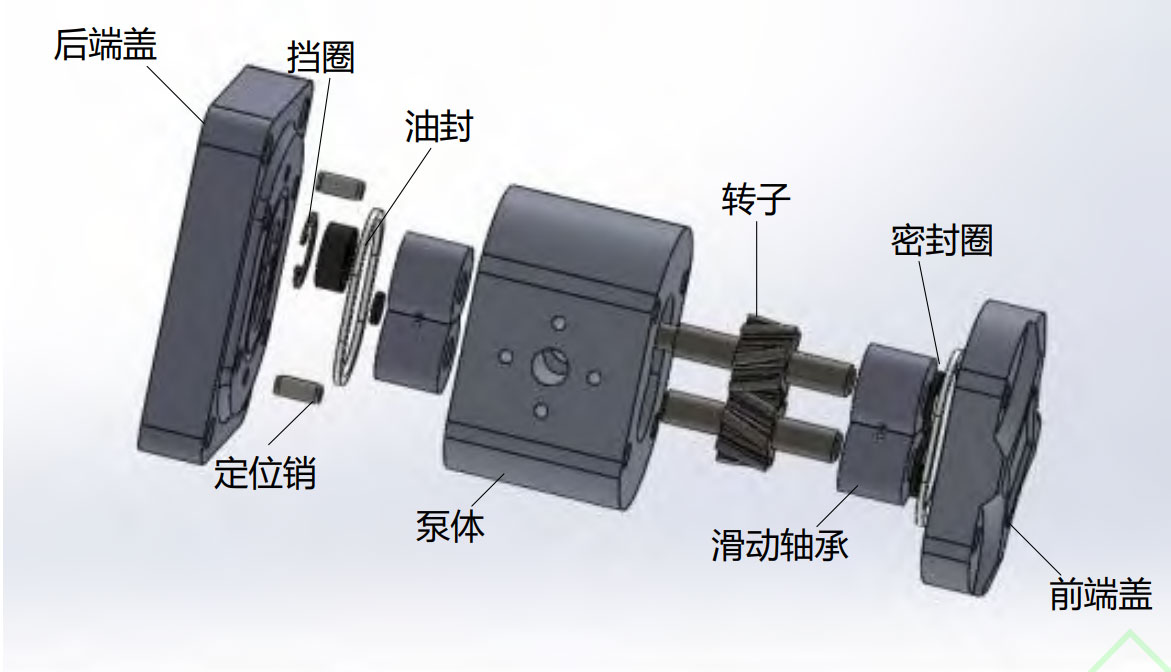The Double Arc Helical Gear Pump is a positive displacement pump that uses helical gears to transfer fluid. The fluid structure coupling in this type of pump is essential for understanding its performance and efficiency. The basic theory of fluid structure coupling for a Double Arc Helical Gear Pump involves the interaction between the helical gears and the fluid being pumped.

The main components of the fluid structure coupling theory in a Double Arc Helical Gear Pump are:
Fluid dynamics: The flow of fluid within the pump is influenced by the geometry of the helical gears, the clearances between them, and the pump casing. The pressure and flow rate are affected by the interaction between the fluid and the gear teeth. Understanding the fluid dynamics in the pump helps to optimize its design for efficient fluid transfer and minimize issues such as cavitation or leakage.
Gear geometry and motion: The helical gear geometry, including the helix angle, tooth profile, and pitch, plays a crucial role in the fluid structure coupling. The motion of the gears creates a series of expanding and contracting chambers between the gear teeth and the pump casing. As the gears rotate, these chambers fill with fluid and transport it from the inlet to the outlet of the pump. The design of the gears and their motion directly impact the efficiency and performance of the pump.
Load distribution: The fluid pressure acting on the gear teeth generates forces and moments that influence the load distribution between the gears. The proper load distribution is essential for minimizing wear, reducing noise, and ensuring the longevity of the gear pump. The fluid structure coupling plays a crucial role in understanding the load distribution and optimizing the gear design to balance these forces.
Mechanical deformation: As the gears in the pump are subjected to forces from the fluid pressure, they can undergo mechanical deformation. This deformation can influence the clearances between the gear teeth and the pump casing, affecting the efficiency and performance of the pump. Understanding the fluid structure coupling helps in predicting and managing these deformations for optimal performance.
By analyzing the fluid structure coupling in a Double Arc Helical Gear Pump, engineers can optimize the design and performance of the pump. This analysis can lead to improved efficiency, reduced noise and vibration, and increased longevity of the pump components. Computational fluid dynamics (CFD) and finite element analysis (FEA) are often used to model and simulate the fluid-structure interactions in gear pumps, allowing for the evaluation and optimization of various design parameters.
